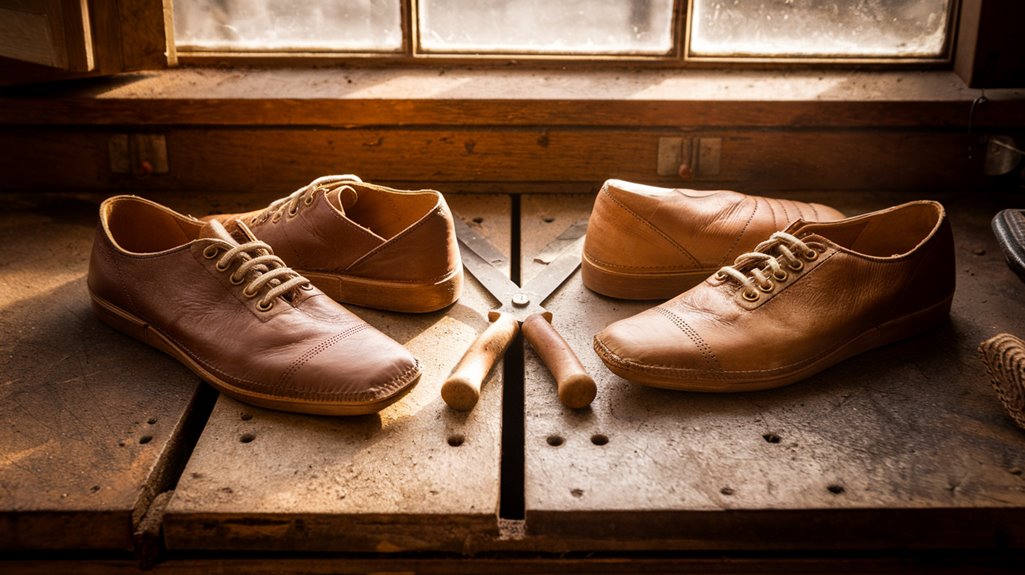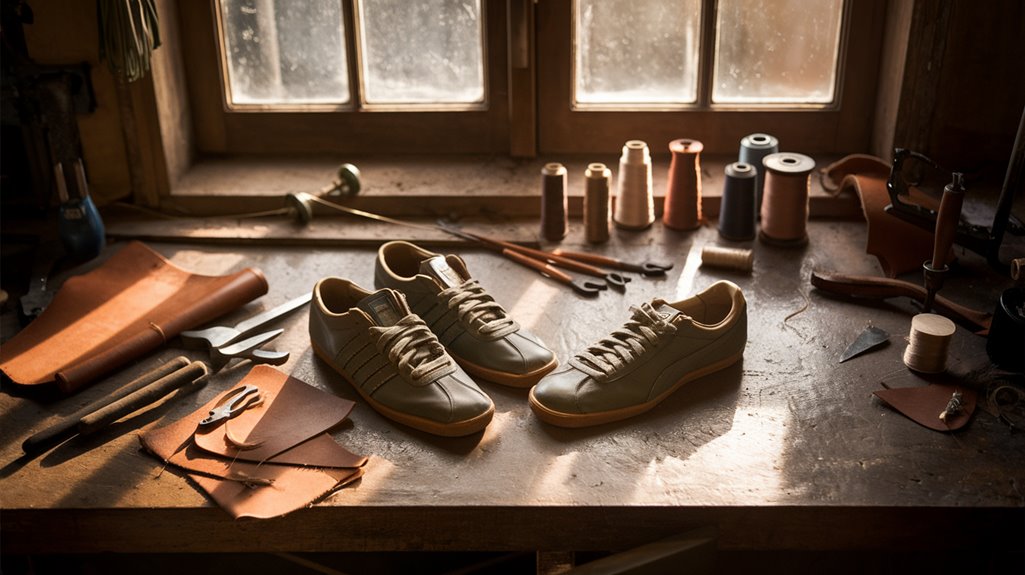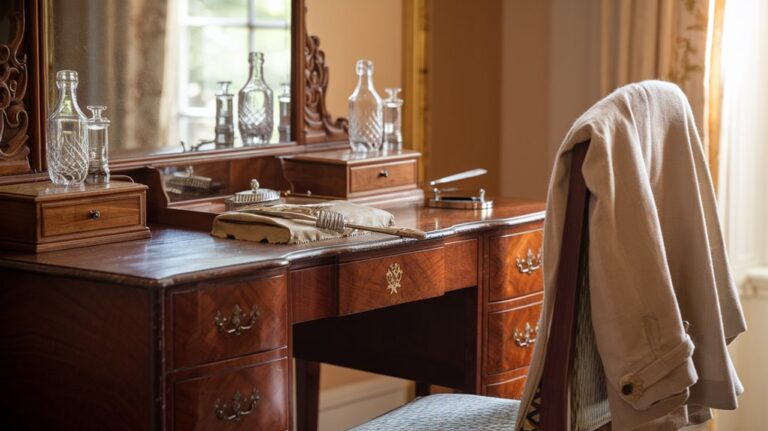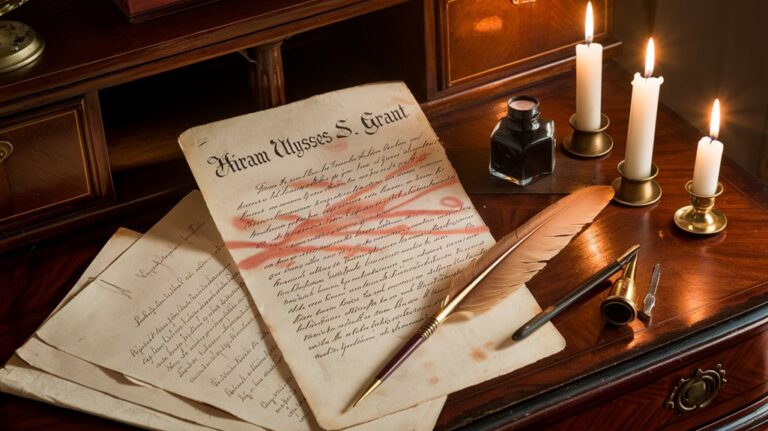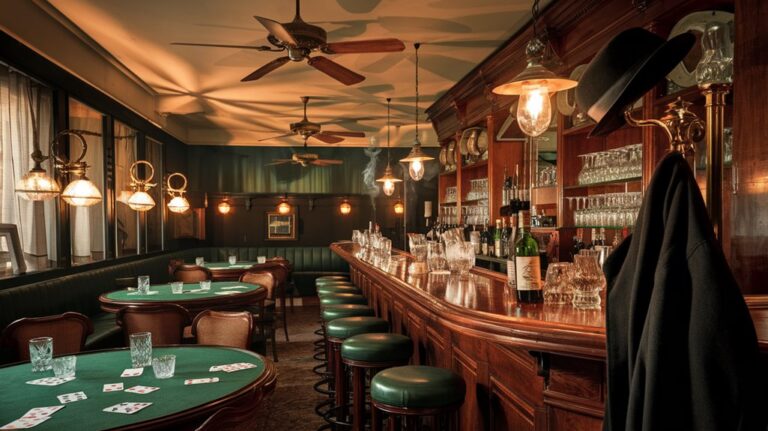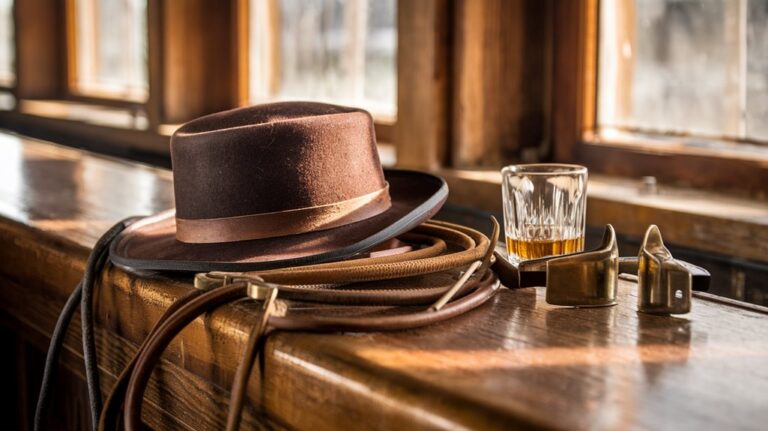The Feud That Spawned Adidas and Puma
You've probably laced up a pair of Adidas or Puma shoes without knowing the bitter family drama behind these iconic brands. What began as a small shoe factory run by two German brothers evolved into one of the most intense corporate rivalries in history. The split between Adolf and Rudolf Dassler didn't just divide their business – it tore apart their hometown and revolutionized the entire sports industry. Let's explore how a family feud created two of the world's most recognizable athletic brands.
The Birth of Gebrüder Dassler Schuhfabrik
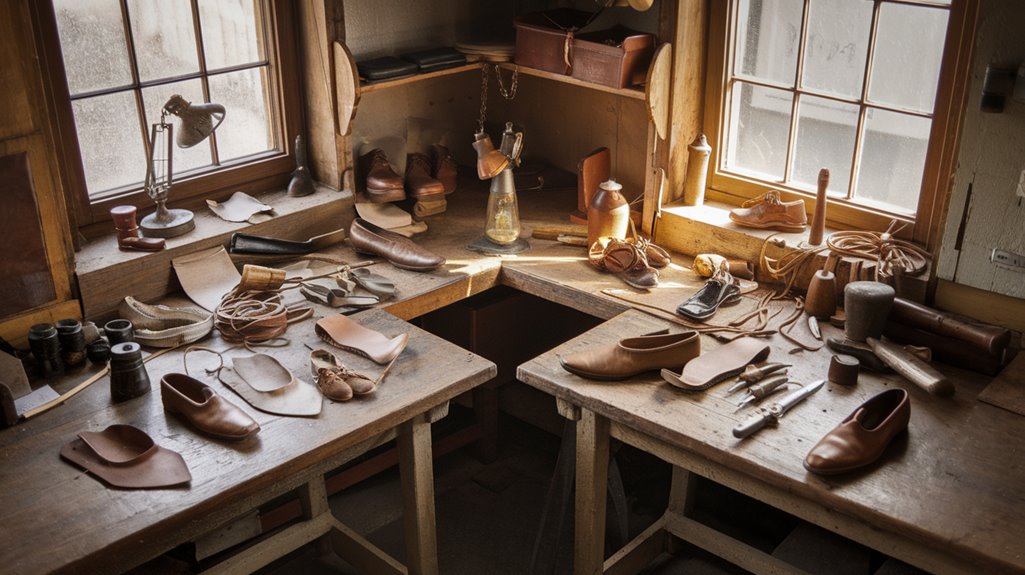
In 1924, brothers Rudolf and Adolf Dassler laid the foundation for what would become two of the world's largest sporting goods companies by establishing Gebrüder Dassler Schuhfabrik in Herzogenaurach, Germany.
What started in their parents' home in 1919 quickly evolved into a proper manufacturing facility, driven by their founding principles of creating high-quality athletic footwear. While Adolf focused on shoe design and production, Rudi handled sales as they built their business.
Their early innovations in spiked track shoes caught the attention of elite athletes, and you can trace their first major breakthrough to the 1928 Olympics in Amsterdam. Their success continued to grow, and by 1936, Jesse Owens won four gold medals wearing their spikes at the Olympic Games.
There, German runner Lina Radke not only won gold in the 800-meter race wearing their shoes but also set a world record.
This success established their reputation for excellence, setting the stage for even greater achievements in the years to come.
World War II and Growing Family Tensions
While the brothers' business flourished in the late 1930s, World War II dramatically altered both their company's trajectory and family dynamics.
Both brothers demonstrated their political alignment when they joined the Nazi Party in 1933 to protect their business interests. Wartime decisions forced their factory to shift from producing sports shoes to military equipment, intensifying existing family feuds. You'll find that living arrangements became particularly tense, with both brothers and their wives sharing a single home during this turbulent period. Their relationship reached a breaking point during an intense confrontation in a bomb shelter fight.
Key developments that shaped the conflict:
- The factory's conversion to military production strained relationships
- Adi's release from military service to manage the factory while Rudi was drafted
- Rudi's subsequent arrest and imprisonment, leading to feelings of betrayal
- Growing tensions between the brothers' wives in their shared living space
- Divergent political allegiances that deepened the family rift
These wartime pressures ultimately led to the company's split and the birth of two rival brands.
The Breaking Point: Brothers Turn Rivals
The mounting tensions during World War II finally shattered the Dassler brothers' relationship in 1948.
What began as family discord, particularly between their wives who shared a villa, evolved into a bitter brotherly betrayal when Rudolf suspected Adolf of orchestrating his army conscription and subsequent imprisonment by the Allies.
Their fundamentally different approaches to business further fueled the split.
While Adolf prioritized product innovation, Rudolf focused on sales strategies.
The brothers faced intense scrutiny during denazification hearings by American authorities.
The local community divided as bent necks became common, with residents checking each other's footwear to determine loyalty.
This business rivalry led to the formation of two separate companies: Adolf established Adidas in 1949, keeping the train station factory and majority of workers, while Rudolf launched Puma (initially called Ruda) in 1948, operating from the Würzburger Street facility.
The brothers' separation would spark decades of competition, transforming both companies into global athletic wear powerhouses.
A Town Divided by Sneakers
Nestled along the Aurach River, Herzogenaurach became ground zero for one of sports history's most notorious family feuds.
The local rivalry transformed daily life as sneaker allegiance dictated where you'd eat, drink, and socialize. You'd even find the Roemmelt bakery keeping both brands of shoes in their delivery cars, switching footwear based on their destination. The feud began when brothers split in 1948, leading to the creation of two competing shoe companies. Today these companies have evolved into global powerhouses, with their combined sales reaching US$ 32.5 billion in 2022.
The town's unique social dynamics created these unmistakable characteristics:
- Locals earned the nickname "bent necks" from checking others' shoes
- Children couldn't play together based on their parents' employer
- The river physically divided Adidas and Puma territories
- Restaurants and bars served exclusively one company's workers
- Businesses had to choose sides or maintain careful neutrality
The division ran so deep that even today, you can still feel echoes of this historic split.
The Battle for Athletic Supremacy
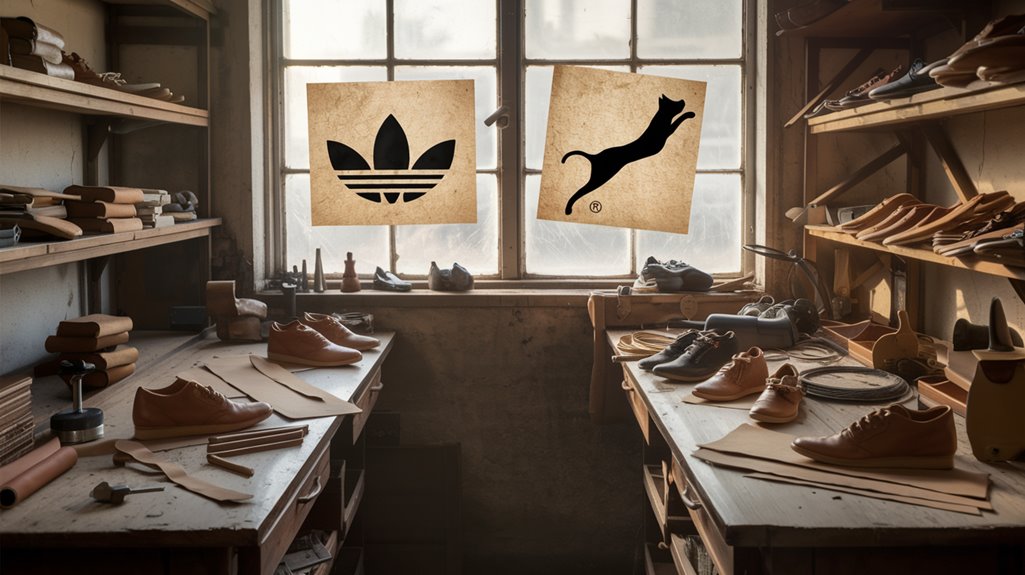
As tensions mounted between the Dassler brothers in the late 1930s, their shared passion for athletic innovation inadvertently sparked a revolution in sports marketing and performance footwear.
Their competitive spirit led to groundbreaking developments, with both companies fighting to establish their athletic identity through different strategies.
You'll find Adidas's influence most prominent in soccer, where they've dominated FIFA events and team sponsorships. The company revolutionized the sport by introducing screw-in studs during the 1950s.
Meanwhile, Puma carved its niche by signing star athletes like Eusebio and developing the legendary Puma King shoe.
This rivalry traces back to the 1936 Berlin Olympics, where Dassler shoes gained fame on Jesse Owens' feet, challenging Hitler's racial ideology.
The brothers' split in 1949 intensified their drive for innovation, transforming a family feud into a catalyst that revolutionized sports marketing and pushed athletic footwear into new territories. Their wartime involvement led to their factory being converted to produce military munitions, marking a temporary pause in their footwear production.
The Lasting Impact on Modern Sports Business
While initially rooted in family conflict, the Adidas-Puma rivalry has transformed into a powerful engine driving modern sports business innovation.
 Dassler brothers' split in 1948, this competitive spirit has never wavered. With Adidas generating global revenues of $23.7 billion, the company has cemented its position as an industry leader.
Dassler brothers' split in 1948, this competitive spirit has never wavered. With Adidas generating global revenues of $23.7 billion, the company has cemented its position as an industry leader.
Today, this historic rivalry continues to influence the global sportswear landscape through:
- Continuous investment in research and development
- Innovative technologies like Boost and Netfit systems
- Strategic regional market positioning
- Creation of high-performance athletic gear
- Expansion of the multi-billion dollar sports industry
Despite Puma's smaller market share at 2.6%, both companies remain at the forefront of sports innovation.
Their ongoing competition has revolutionized athletic performance and created a blueprint for how modern sports businesses operate, pushing boundaries in technology and design while adapting to changing consumer demands.

